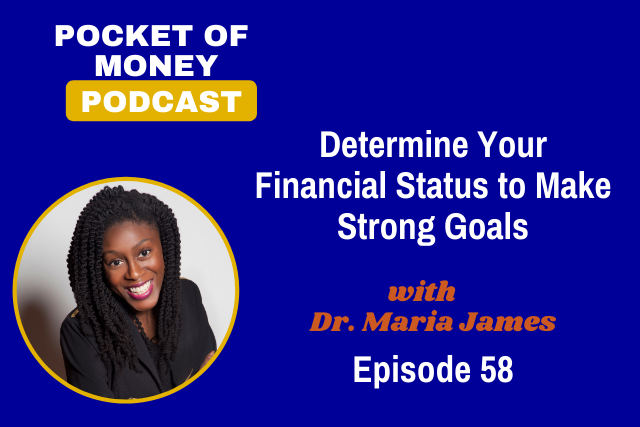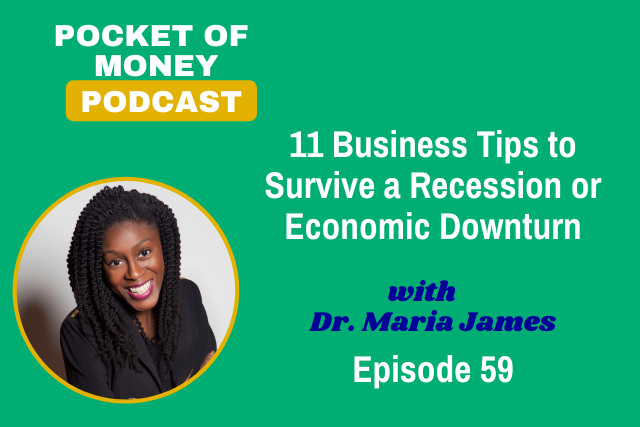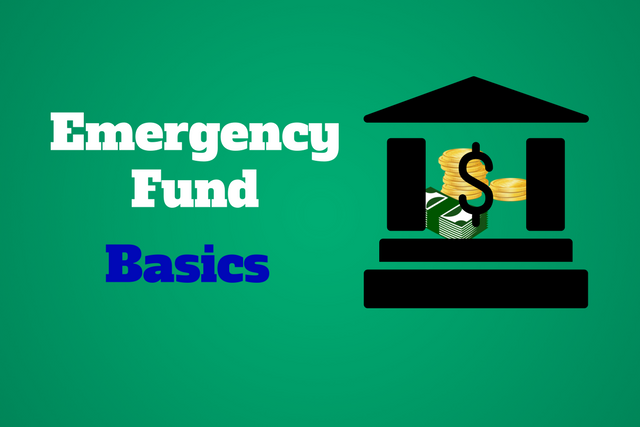POM058: Determine Your Financial Status to Make Strong Goals

Listen and subscribe: iTunes, Stitcher, Spotify
In this episode, I discuss important financial status indicators you should review before drafting your financial goals. Get clear on your real status and determine which financial goals should be top priority to increase financial fitness.
Resources Mentioned:
WISE Money Challenge Tips to Save and Earn More Money
Ebook where I include over 100 side hustle resources in 10 categories. This book also contains in-detail 22 specific actionable tips to save or earn more money. It’s set up as a challenge to get you to take an action each day. As a Success Rebel and listener of the podcast, you can get it for free. Use the discount code relief.
Take the assessment to get your financial fitness score. This score is based on an algorithm I created to take into account not just the typical financial status indicators but behavior and mindset as well.
Episode Transcript:
Hey Success Rebel, it’s Dr. Maria James, The Money Scientist. We are officially in 2021. At the start of a new year is usually when a lot of us are focused on goals and changes that we want to see in our lives and our businesses.
Many people make New Year’s resolutions and either save them, write them down or create vision boards and collages. There’s something about the start of the new year that makes you think of a fresh start in general. It usually feels like everything is full of potential and opportunity, like you can make changes and progress.
Many New Year’s resolutions and new goals involve finances, and positive that this year is no different, probably even more so than usual.
You’re likely looking to increase your income this year, save more money, knockout some debt, or probably beef up your assets. And maybe all of the above.
This pandemic exemplifies why financial stability and financial security are so important. Financial stability is when your current financial situation is stable. Your income can take care of short-term liabilities aka your bills. You can purchase everything you need to survive. You also are able to handle most unexpected expenses.
Financial security means you can go beyond the basics. You have money and vehicles in place to handle future long-term financial goals and expenses. You’ve also taken steps to protect your money and wealth. You are secure in your ability to take care of things now and in the future.
These two things were rocked and completely stripped from a lot of people and most quite unexpectedly. It really brings home the importance of having money set aside that can accommodate several months’ worth of bills a.k.a. an emergency fund. Another major take-away is the importance of multiple income streams.
We’ve all heard about the importance of multiple income streams before, but the pandemic really reiterated that lesson.
Side hustles became significant lifelines to keep some level of income for many people and a way to focus on shoring up financial goals for others. An extra few hundred dollars per month can make a big difference. An extra few thousand dollars per month definitely makes a difference.
I really advocate for everyone to have a side hustle, multiple streams of income. Also, to diversify those streams. So, what do I mean by that, diversify? Well, have the streams be in different things. For example, I know a lot of people pick up a second job and some a third job in order to increase income or add income streams. This is a tried-and-true method.
However, jobs are streams that you cannot control. As we’ve seen if there is a major disruption to the economy this can result in a lot of furloughs or layoffs in many different job sectors or industries. I suggest also having an income stream that is completely within your control. This is where the side hustle comes in and there are so many options.
In my e-book WISE Money Challenge: Tips to Save and Earn More Money, I include over 100 side hustle resources in 10 categories. This book also contains in-detail 22 specific actionable tips to save or earn more money. It’s set up as a challenge to get you to take an action each day. As a Success Rebel and listener of the podcast, you can get it for free. Use the discount code relief. I’ll include a link in the show notes page.
Financial Status
Alright so taking it back to your resolutions and goals. As you are making goals about increasing your financial fitness whether that is saving money, making more money, eliminating debt and/or building wealth, first get clear on your foundation. Get clear on your current financial status or baseline financial fitness.
No matter what may have occurred this year, remember where you are now is not where you’ll always be. However, in order to craft a successful plan or strategy to get to where you want to be, you first need to be crystal clear on where you currently are.
Let’s go over three not so common or talk about financial status indicators. Most people rely on their amount of money in the bank and their credit score to assess their financial fitness. These are two great financial status indicators, but they don’t tell the entire story. You should look at some other numbers as well to get the full picture of your financial fitness.
When you determine these as well, you can begin designing a strategy to get to where you desire to be on your financial journey.
Financial Status Indicators
1) Savings – cash available
Look at the amount of money you have saved. Readily available cash definitely handy during an emergency or financial disruption. This is why saving money or establishing an emergency fund is one of the first steps in increasing financial fitness.
You have to have cash set aside for when that unexpected expense or hard time pops up. Without it, you end up borrowing money and going into debt. Debt erodes your financial stability and financial security.
If your current income covers all your household bills, but you don’t have money saved then creating an emergency fund should be a top priority goal.
If you have 6 to 9 months’ worth of bills saved, then you have a complete emergency fund. If you are an entrepreneur, I suggest extending that to 12 to 18 months’ worth of bills saved.
2) DTI – debt to income ratio
The next financial status indicator is DTI, your debt to income ratio. This is how much of your monthly income goes towards debt every month. Traditionally DTI is based off of your gross income before taxes or any other deductions.
This is one of the factors lenders will assess when you apply for a loan. The higher the percentage the lower your financial fitness and the riskier you look to lenders. For example, you may have heard that only 28% of your monthly income should go towards paying a mortgage. If your mortgage payment alone, without factoring in other debt, is a much higher percent then you are overextended. This means you have too much debt for your income.
You want to keep this percentage for ratio low. You don’t want a lot of your income being eaten up by debt. Remember debt lowers your financial stability and financial security. You want to be able to put as much of your income as possible towards actions that increase your financial fitness, stability, and security. These are things like saving more money and purchasing assets, things that will increase in value over time.
3) Assets and Investments – non-cash assets
This takes us to our third financial status indicator: the amount of assets or investments. Take a look at your non-cash assets. In order to build wealth and have it continue to grow, you need to own things that will be worth more money over time.
These can be things like a small business, real estate, stocks, and bonds. Yes, your business is an asset, when it is profitable. If the business is bringing in enough revenue to generate a profit and is doing well then it is an asset. If you’re building your business and it is currently costing more to run than it is generating revenue, then it is not an asset yet. It is not profitable yet.
So look at your investments and the worth of your assets. Ask yourself if you are building wealth and enough wealth to successfully sustain you in retirement. There are numerous retirement calculators out there where you can determine how much money you need to have saved and invested for retirement based on your current income and estimated lifestyle in retirement or the amount of money you need in retirement.
Just do an Internet search for retirement income calculator and you’ll find a bunch of them. Play around with these calculators and determine your target amount for retirement. Then you’ll have a better idea if you are on track or have of lot of work to do to be financially ready for retirement.
Of course if you’re not on track this decreases your financial fitness and if you are on track to meet your target retirement amount or surpass it then this increases your financial fitness.
Bonus: Net worth – assets minus liabilities
Okay so those are the three financial status indicators that you should definitely review in addition to looking at your checking account and credit score. Now I’m going to discuss a bonus financial status indicator that you likely ever heard of as well, but it’s a really good one.
You should also calculate your net worth. Your net worth is total assets minus liabilities. And liabilities are things that you so think debt.
Your net worth gives a good indicator if you’re moving towards increase financial fitness and wealth building. Of course, you want to decrease liabilities and increase assets. If you have a lot of debt and not many assets then your net worth is negative and you know that you have to work on paying down the debt.
If you have a small but positive net worth then you know you need to work on increasing assets and continuing to stay out of debt or keep the debt low.
If you have a large positive net worth then you’re doing really well and likely have a high level of financial fitness.
Goal-Setting
After looking at these financial status indicators you will have a better picture of your financial fitness. You’ll also have a better idea of what your priority financial goals should be.
You can get a more detailed assessment of your financial fitness by getting a WISE Financial Fitness Score. This score is based on an algorithm I created to take into account not just the typical financial status indicators but behavior and mindset as well.
A shift to a wealth-building mindset and consistent good financial management behavior also speaks to financial fitness. You can get a free WISE Financial Fitness Score at wisefinancialfitness.com. I’ll put a link to the assessment in the show notes.
Alright Success Rebels, good luck determining your financial fitness and designing powerful financial goals. Until next time.
Thanks for Listening
If you have any comments or questions about this episode, leave a comment below. If you liked what you heard subscribe on iTunes, Stitcher, or wherever you listen to podcasts and rate it. This helps the podcast show up for others.





